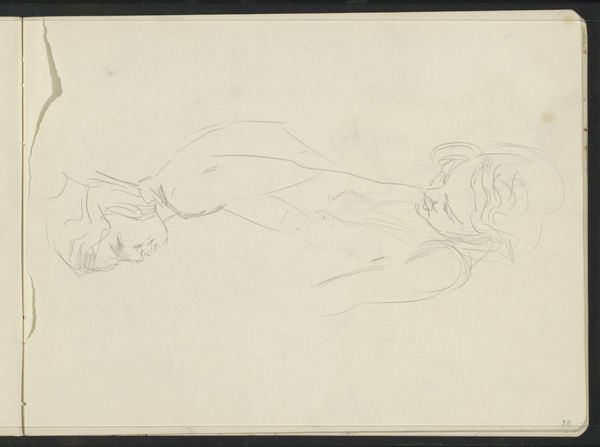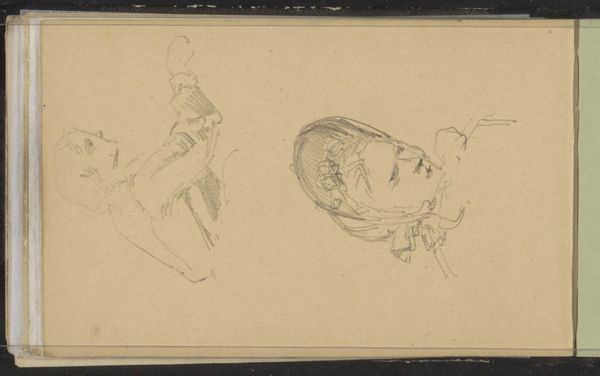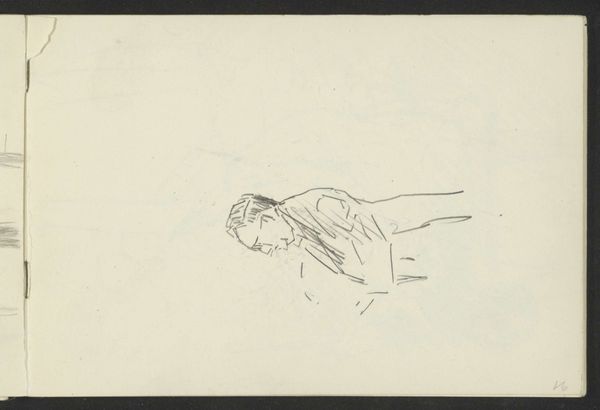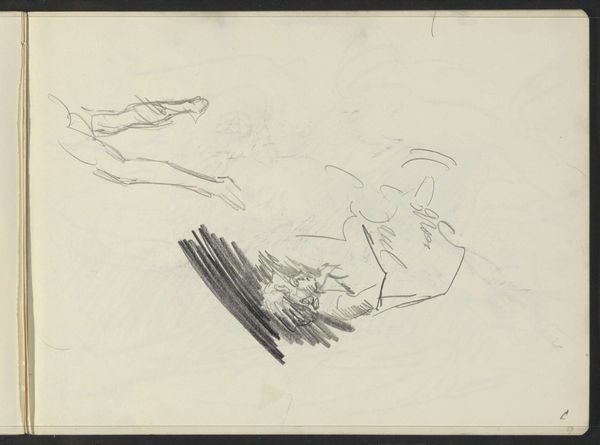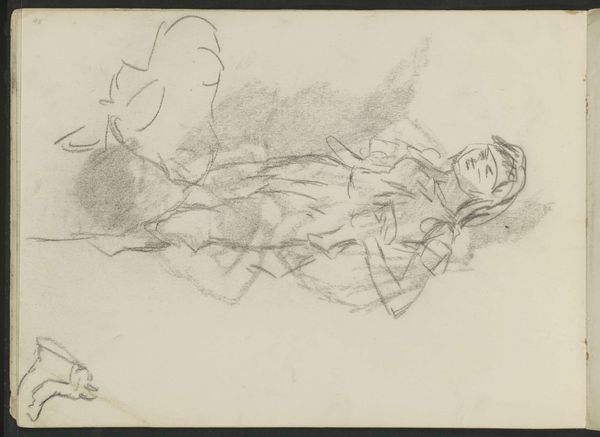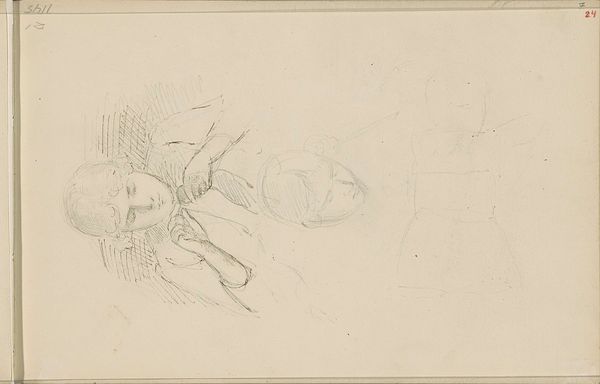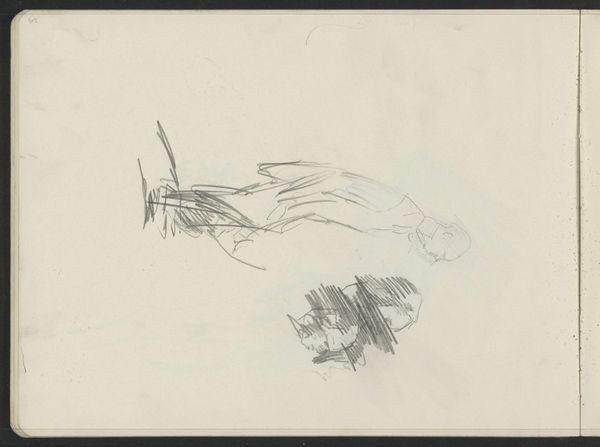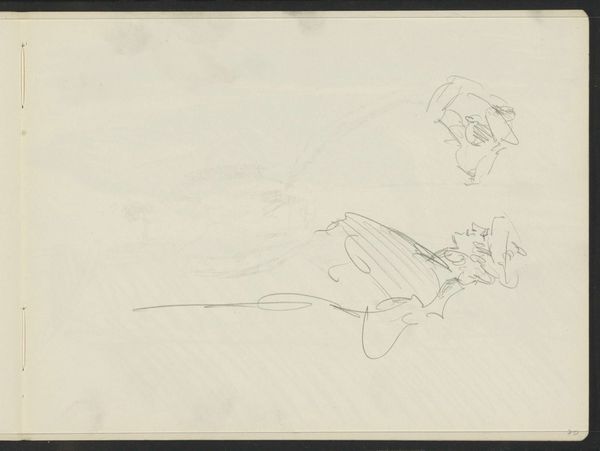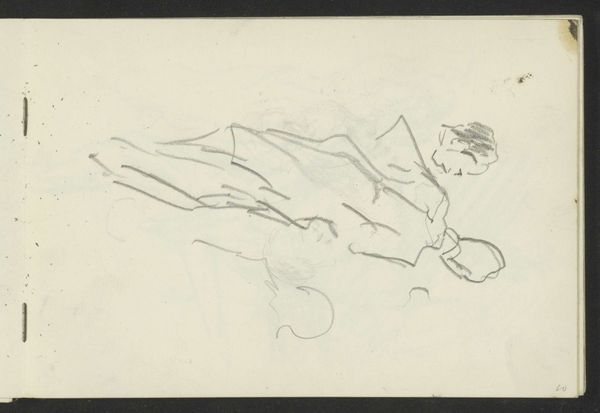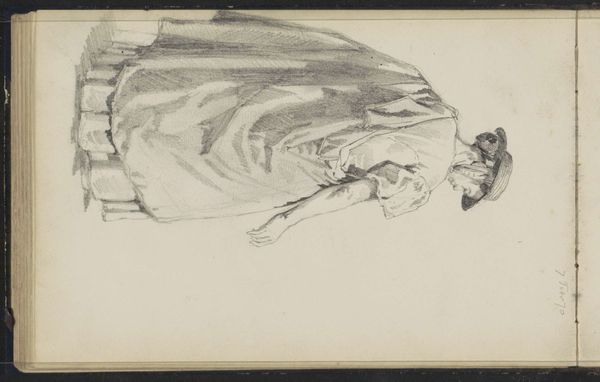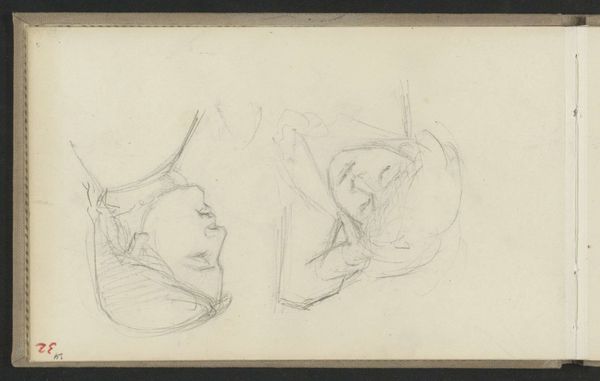
Copyright: Rijks Museum: Open Domain
Editor: So this is "Standing Man in a Jacket and a Face," a pencil drawing by Isaac Israels from around 1915 to 1925, here at the Rijksmuseum. It feels so spontaneous, like a quick glimpse captured on paper. What strikes you most about this drawing? Curator: What jumps out to me is the way Israels is engaging with the rapid changes in Dutch society at the time. The "man in a jacket" suggests a burgeoning middle class, eager to embrace modernity. Israels, positioned within the art world, is almost documenting this shift. Does the composition suggest anything about class to you? Editor: I hadn’t considered it that way. The face is so separate, almost floating—is it a commentary on isolation perhaps? Curator: Possibly, or maybe a statement about representation itself. Israels was known for his Impressionistic style; capturing fleeting moments and impressions was crucial. Consider the broader art scene then—what were the established artistic institutions promoting, and how might Israels be positioning himself in relation? His loose sketch challenges the formal portraiture of the establishment. Editor: So this quick sketch aesthetic is a statement in itself, pushing back against the rigid academic style? Curator: Precisely! And it begs the question: Who gets represented and how? Israels wasn’t just creating art; he was participating in a visual dialogue about societal values. The artwork’s presence in the Rijksmuseum elevates it, thus reshaping contemporary notions about what's considered valuable and worthy of preservation. Editor: That makes me see it in a completely new light! It’s not just a sketch, but a commentary on art and society itself. Curator: Exactly. Looking at it this way, we understand that the work is so much more than lines on paper. It is the artistic embodiment of Dutch culture at a critical period of reassessment.
Comments
No comments
Be the first to comment and join the conversation on the ultimate creative platform.
